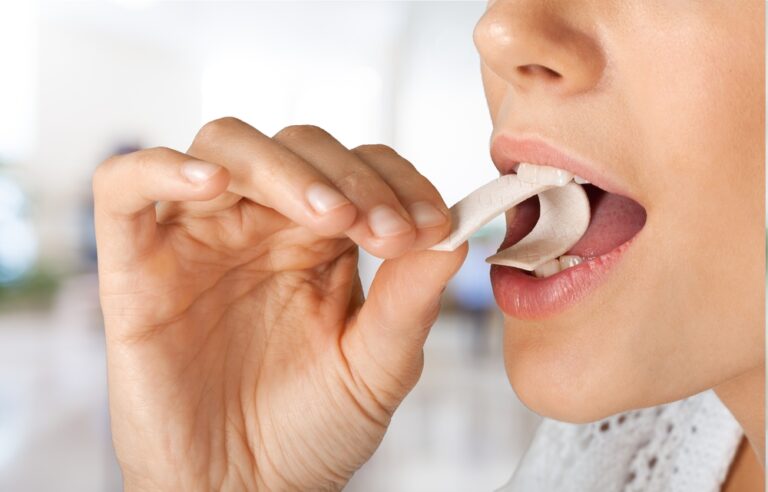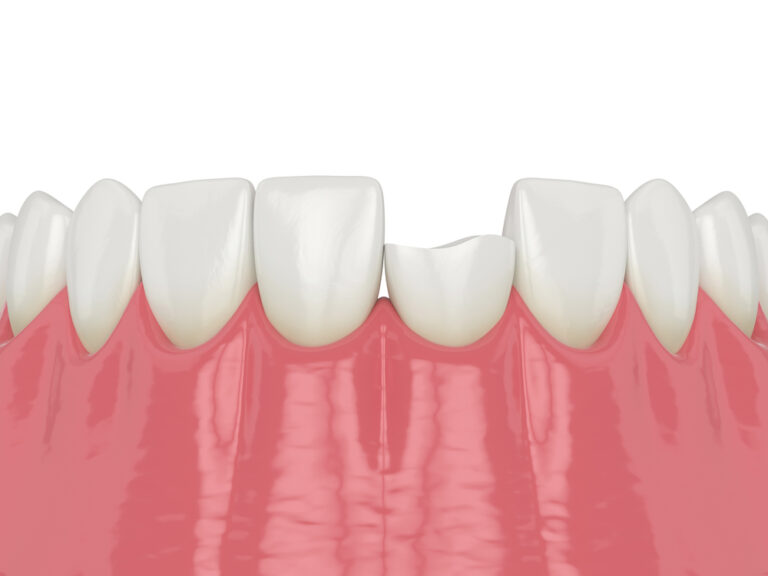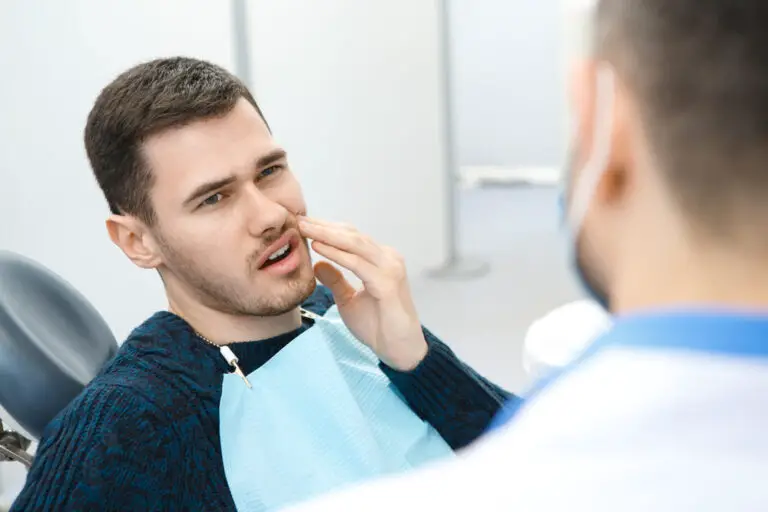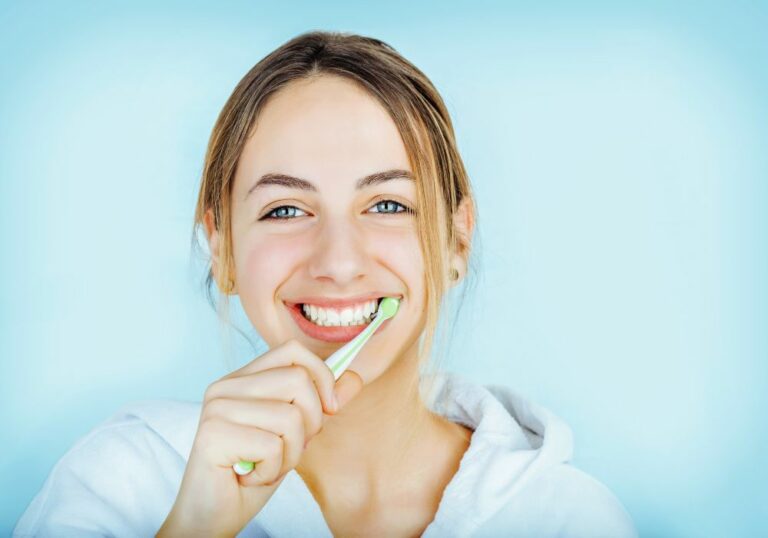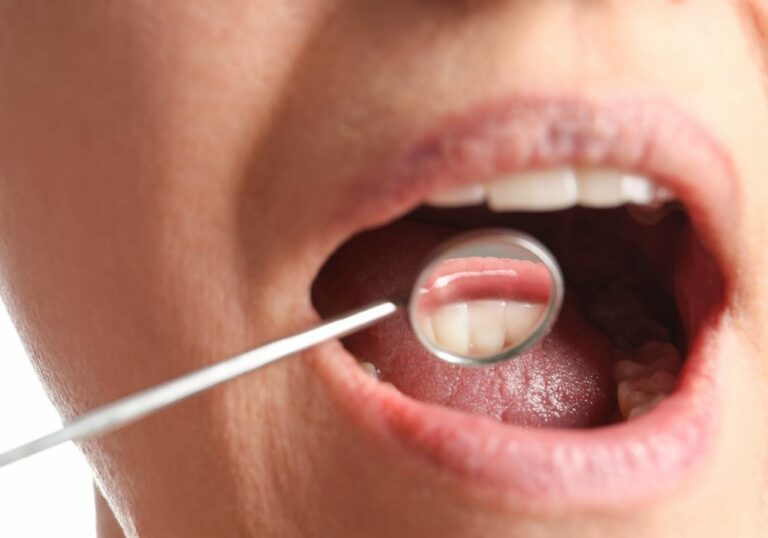Dogs rely on their mouths to interact with their world. Their mouths, teeth, gums and tongue are extremely sensitive and allow them to effectively explore objects. For dogs, using their teeth on humans or other dogs serves several purposes depending on the context. It’s important to analyze your dog’s body language to decipher the intent behind them putting teeth to skin.
Understanding the reasons behind dogs using their teeth
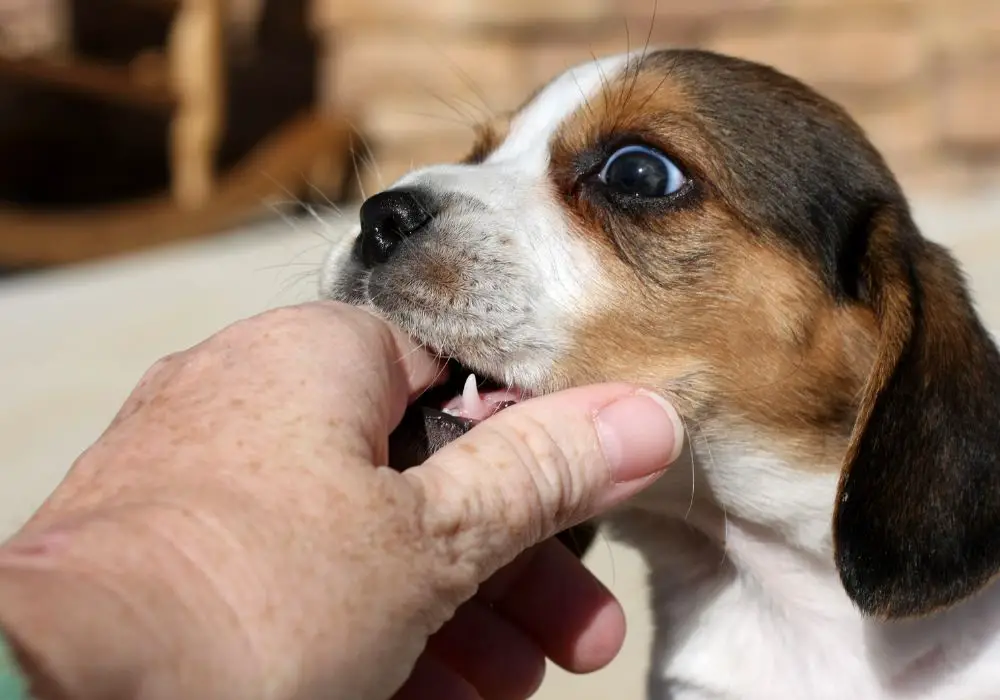
1. Communication
Using their mouth and teeth is one of the few ways dogs have to communicate their wants and needs. A dog may gently take your hand in his mouth to get your attention, request something like food or a walk, or attempt to lead you somewhere. Puppies may nip and mouth as a form of play solicitation. This “mouth soft” behavior is non-threatening and aims to communicate rather than cause harm. Pay attention to your dog’s cues like maintaining loose jaw muscles, wagging tail and soft eyes to determine if communication is the intent.
2. Exploration
Dogs interact and understand their world primarily through their mouths. Especially as puppies, dogs will mouth and nip objects as part of the exploratory process. Puppies teethe for about 6 months, during which they experience pain and swelling in their gums. Gentle mouthing and chewing onhuman hands, feet or clothing provides relief as well as helping puppies discern textures, shapes and densities. Puppies should be redirected to chew toys but not punished physically or verbally for this normal teething behavior.
3. Play
What seems like aggressive biting to humans is often just playful sparring to dogs. Dogs naturally “play fight” with each other using elaborate body language cues, mouthing and inhibited bites that cause no harm. Much of dogs’ roughhousing play with humans mimics canine social behaviors. Your dog may be trying to engage you in play by taking your hand or arm in his mouth. Proper cues and training can redirect this behavior into more acceptable interactive play with toys that satisfies your dog’s needs.
4. Discomfort or pain response
Dogs in pain or discomfort are more likely to nip or bite when touched near the source. This is an instinctive reflex response, warning others away from aggravating the painful area. Anything causing mouth pain like dental disease, broken teeth or jaw injury can lead to snapping when the muzzle is touched. Dogs with ear, skin or joint pain may nip when those areas are handled too. Startling or overstimulating a dog can also evoke a nip or bite, so dog’s stress levels require consideration as well.
5. Dominance/status related
Intact male dogs in particular are prone to asserting their dominance through physical displays like mouthing and biting. Dogs striving for higher pack status may take human hands or arms in their mouth to establish control. This behavior often intensifies as dogs mature if status issues are not properly addressed through rules, structure and training. Mouthing related to dominance occurs more frequently when humans engage in wrestling, chase games or tug of war with dogs.
6. Fear and anxiety
Dogs feeling threatened or anxious resort to biting and mouthing as a defensive mechanism. Fear biters often deliver quick, deep bites then retreat. Other fearful dogs may go into freeze mode, trembling and gnashing their teeth as a warning. Pushing anxious dogs past their comfort limits or applying punishment can worsen their anxiety and lead to reactive biting. Fear based mouthing requires counterconditioning and removing or lessening sources of anxiety in the dog’s environment.
Understanding the root causes of why a dog mouths or bites provides critical insight on addressing the behavior through training, enrichment and building confidence. Never attempt to handle or correct dogs displaying true aggression, as bites often intensify. Instead, consult qualified professionals.
Effective ways to discourage mouthing behavior in dogs
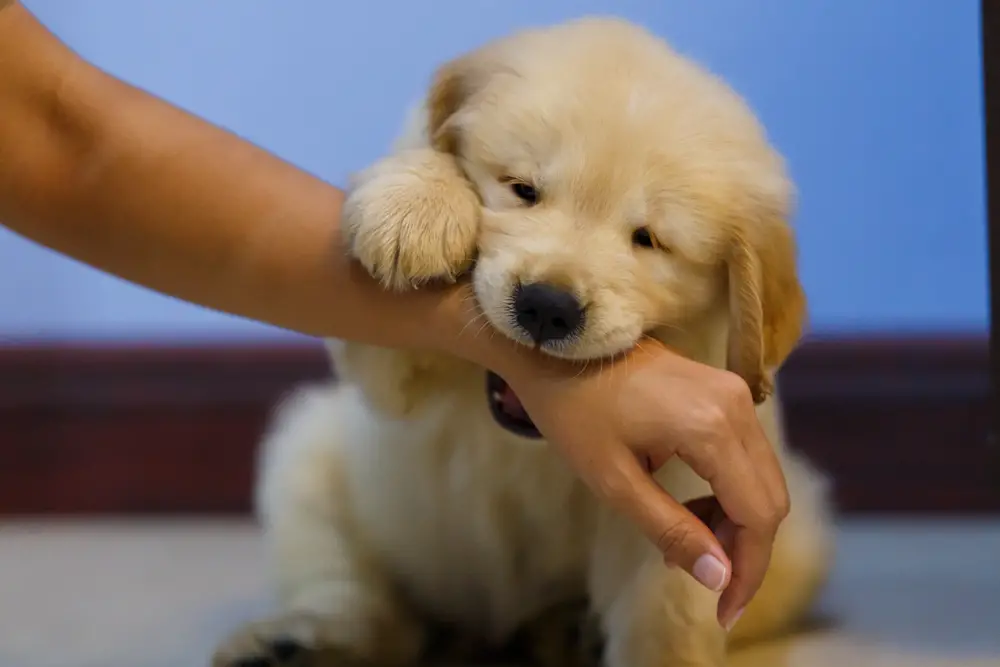
Once you identify the motivation behind your dog’s mouthing, you can take steps to curb the behavior. Consistency is vital for success. Here are tips for discouraging common forms of mouthing:
If attention seeking
- Completely ignore your dog when he mouths on you, then reward with attention only when he stops. This reinforces that mouthing does not result in what your dog wants.
- Teach and reward an alternate attention-seeking behavior like ringing a bell or bringing a “pet me” toy.
- Ensure your dog receives sufficient exercise, mental stimulation and quality time with you.
- Avoid indulging demand behaviors with affection or treats as this can intensify them. Redirect your dog into a settle or extended down stay instead.
If play solicitation
- Establish rules for play, like no teeth on skin. Stop play anytime your dog’s teeth make contact. Resume play once he has calmed down. This teaches that mouthing ends fun.
- Encourage fetch, tug or chase games using dog toys. Having an object in his mouth curbs nippy behavior.
- Follow play with training using commands like sit, down, stay which mentally challenge your dog.
- Avoid wrestling, roughhousing or hands-on play which overexcites dogs leading to nipping.
If exploring/teething
- Provide many safe, durable chew toys and frequently praise puppies for chewing those items. Rotating toys maintains interest.
- Apply a bad tasting but pet-safe deterrent spray on surfaces or body parts you want off limits. Bitter apple spray detracts chewing.
- Offer frozen towels, frozen carrot sticks or ice cubes for sore puppy gums. The cold soothes inflammation.
- Use reverse time outs – stand up and walk out of the room briefly when your puppy mouths on you. This teaches that mouthing ends social interaction.
If pain or discomfort
- Schedule a veterinary exam to identify any underlying conditions causing your dog pain that leads to mouthing when handled.
- Treat any health problems contributing to the behavior. Dental issues, ear infections, arthritis and other sources of pain must be addressed.
- Slowly desensitize your dog to being touched in painful areas by pairing with treats and praise. Go at your dog’s pace.
- Teach an alternative behavior when poked or prodded, like moving away or sitting still, using positive reinforcement.
If dominance behavior
- Spay/neuter dogs displaying any dominance related behaviors, as intact dogs are more prone to these issues.
- Establish yourself as benevolent leader by enforcing rules, routines and structure using only positive training methods. Reward deference behaviors.
- Completely ignore attention seeking mouthing behaviors. Reward calm, polite interactions with affection and treats.
- Consult professionals like veterinary behaviorists to guide restructuring interactions and resolving conflicts.
If anxious/fearful
- Identify and minimize any environmental or social factors triggering anxiety that may lead to reactive mouthing or biting.
- Use desensitization training to change your dog’s association with stressors from scary to pleasant. Pair with high value treats.
- Consider anti-anxiety products like Thundershirts, D.A.P. pheromone diffusers or prescribed medications if behavior is severe.
- Implement enrichment activities that build confidence like nosework, lure coursing and trick training.
- Seek guidance from veterinary behaviorists or certified applied animal behaviorists to customize anxiety reduction protocols.
Patience, consistency and addressing the root motivations behind dogs’ mouthing is key to changing the behavior long term. Always use force free, positive training methods. Progress may be gradual but worth the improved trust and bond with your dog.
Warning signs of problematic biting behavior
While most mouthing by dogs is relatively harmless, certain behaviors are cause for concern and require intervention. Contact your vet or a qualified behavior professional if your dog exhibits:
- Biting that breaks skin, leaves marks/bruises or requires medical attention
- Biting or aggression when being groomed, having nails trimmed, taking medication or being physically examined. A vet visit is required to check for injury or illness before grooming can resume.
- Frequent biting directed towards children despite otherwise gentle behavior. Children cannot interact safely with the dog until training occurs.
- Biting or snapping when humans approach food, toys, beds or other objects. This resource guarding must be addressed to prevent bites.
- Sudden increased mouthing or biting by a previously gentle dog. Vet exam is needed to identify potential causes like pain, hormonal changes or neurological issues.
- Biting paired with threatening body language like bared teeth, rigid posture, snarling and lunging. This signals serious aggression requiring professional intervention.
While well-intended, attempting to correct or punish aggressive biting often backfires by worsening the behavior. Safely manage the situation and consult qualified experts in aggression for guidance. Protecting humans must remain the priority in addressing problematic biting of any kind in dogs.
Key training strategies to stop dogs from mouthing
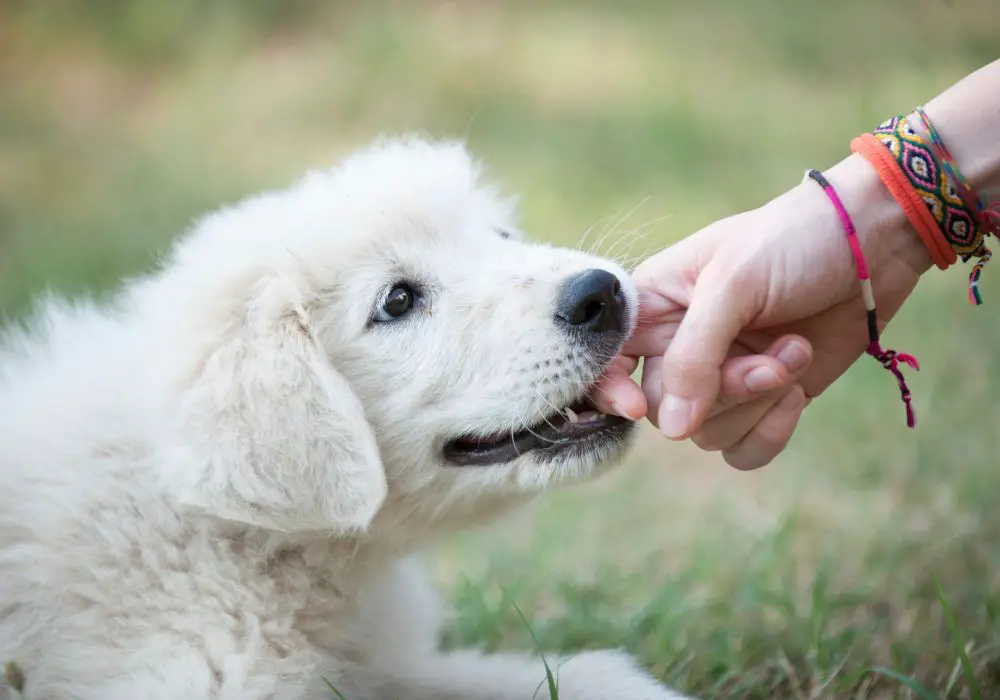
Here are some fundamental training strategies to implement in order to curb your dog’s mouthing on human skin:
Be consistent – Everyone in the household must reinforce the same rules about mouthing. Use the same verbal cues like “enough” or “no bite” whenever mouthing occurs so your dog easily connects those words with the unwanted behavior.
Positive reinforcement – Compliment and reward your dog with treats and praise when he responds to redirection cues or ceases mouthing when told. Look for and encourage any approximations in the desired behavior. Rewards fuel repetition of wanted behaviors.
Remove attention – The most potent consequence for attention seeking dogs is denying them what they want – your attention. Completely ignore your dog when he mouths on you. Only re-engage when he has stopped the behavior.
Provide suitable outlets – Have an abundance of appropriate chew toys available at all times. When your dog mouths on you, instantly redirect to a toy. Praise as he begins chewing the toy instead. This redirects the mouthing urge to an approved item.
Employ gentle correction – For persistent mouthing from overexcited dogs, say “no”, gently close the dog’s mouth with your hand and push in and down on the lower jaw behind the canines. Release when he relaxes his bite. Praise calm behavior. Repeat if needed. This mimics canine correction.
Stay calm – If your dog gets amped up and mouthy during play, freeze and end all interaction. Divert his energy into a chew toy until he settles down, then try again. Frustration can worsen hyper behavior.
Seek professional guidance – For serious mouthing issues or if fearful of handling your dog, consult certified trainers or veterinary behaviorists. They can advise safe, effective modification techniques tailored to your dog.
With persistence and properly addressing the motivation behind dogs’ mouthing, the behavior can be modified even in challenging cases. Always use force free training methods for the best results long term.
Answers to common questions about dogs who mouth and bite
Q: My older dog suddenly started mouthing and nipping us. Why did this behavior start?
A: Sudden onset of mouthing or biting in mature dogs often indicates pain or anxiety as the underlying cause. Schedule a veterinary exam to identify any medical issues like dental disease, arthritis or injury leading to the behavior change. Also evaluate any recent changes in schedule, environment, social dynamics or handling that could be causing your dog stress and anxiety that leads to reactive mouthing or biting.
Q: My puppy play-nips a lot. How do I teach her this is unacceptable behavior?
A: Mouthing and nipping are normal but undesirable puppy play behaviors. Say “ouch!” dramatically when your pup’s teeth touch skin, then immediately stop playing. Redirect her energy into a toy, and resume play when she is calmly chewing the toy. Be consistent so she learns that teeth on humans ends fun. Verbal cues and redirection are key for teaching gentle play.
Q: Should I teach my puppy bite inhibition along with reducing mouthing?
A: Bite inhibition involves teaching a puppy to moderate his bite pressure when teeth make contact. However, allowing biting to persist while teaching inhibition still permits the unwanted behavior to continue. Combining inhibition work with training an alternative to mouthing like “kiss” yields better and safer results long term.
Q: Why does my dog growl and bite me when I try to take away stolen items or dangerous objects?
A: Resource guarding causes dogs to protect valued objects from being “stolen”. Instead of grabbing items from your dog’s mouth, offer irresistible treats in trade for the item. Seek guidance from a certified behavior consultant to address resource guarding if the issue is severe. Never attempt to take items by force, as this intensifies biting behavior over time.
Q: My dog keeps mouthing and biting the kids when they play together. How can I teach him to play nice?
A: Kids’ higher pitched voices and erratic movements can overstimulate dogs, leading to nipping or biting. Supervise all interactions and teach kids to play appropriately with dogs using toys. If your dog persists in nipping children, keep them separate unless supervised by an adult dedicated to monitoring the dog. Consulting a qualified dog trainer or behaviorist is ideal for resolving this issue safely.
Understanding why your dog mouths or bites allows you to pick appropriate training strategies to curb the behavior. If ever unsure how to proceed, seeking guidance from certified trainers or veterinary behaviorists can help ensure everyone’s safety and happiness. They will consider the motivation behind your dog’s unique mouthing issues and offer effective solutions tailored to your needs.

